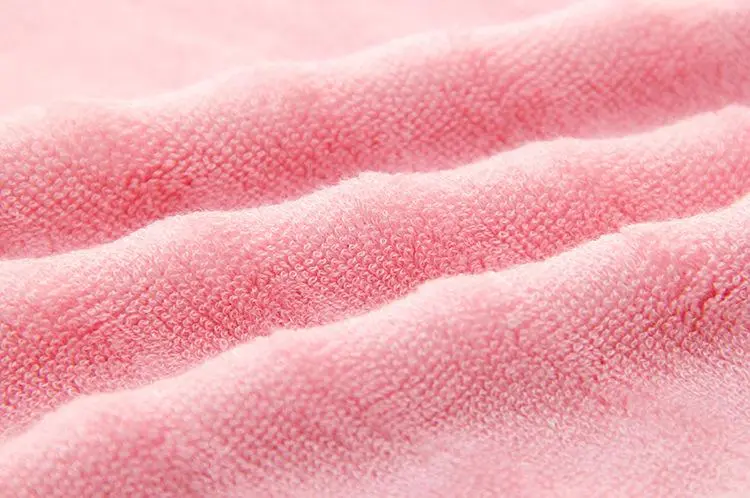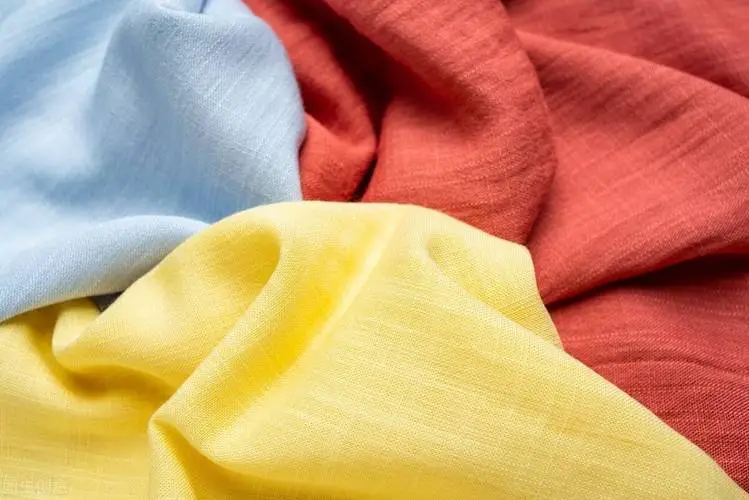The formaldehyde content of fabrics is the total amount in textiles. It includes formaldehyde, hydrolyzed formaldehyde, and free formaldehyde. The formaldehyde may come from additives used in textile production. These include anti-wrinkle agents, color-fixing agents, and softeners. The formaldehyde in them may bind to the fibers through reactions, or exist in the textiles in free form. Too much formaldehyde can harm human health. Different places have strict limits on it in textiles.
China’s basic textile safety standards closely follow the world’s advanced standards. Its eco-textile formaldehyde content standards do too. The formaldehyde limit they set is relatively high. This high limit helps protect consumers. It is especially important for infants and young children. It also reduces skin irritation and other health problems from excessive formaldehyde.
Formaldehyde content of cotton and its blended textiles standards abroad
The formaldehyde content of cotton and its blends meets different standards. The main ones are international standards (ISO). They are the American Association of Dyeing and Chemical Control Council (AATCC). The British Institute of Shelley standards. And the German (DIN) and Japanese (JIS) standards. And they make their own standards. They do this to ensure product quality. And this is done by some large international purchasers in the US and the EU. They do this based on their own requirements and with reference to the above standards. Most are test method standards. If they are product standards, most are based on end-use, no matter the fiber type. And these cotton and blended fabric standards cover formaldehyde. They have two main parts. One tests for free formaldehyde. The other tests for released formaldehyde. Each part uses different test methods. The representative standards are mainly:
(1)It is named ISO 14184-1: 2011. It is about “Determination of Formaldehyde in Textiles”. This is Part 1. It is about “Free Hydrolyzed Formaldehyde”. The method uses water extraction.
(2) It is named ISO 14184-2: 2011. It is about “Determination of Formaldehyde in Textiles”. This part is about “Release of Formaldehyde (Vapour Absorption Method)”.
(3) The standard is from the International Eco-Textile Research and Testing Association. It is called Oeko-Tex Standard 100. The full name is “Eco-Textile Standard 100 General and Special Technical Conditions.”
(4) The document is called “Determination of Formaldehyde on Textile Fabrics.” It uses the Vapour Absorption Method.” The American Association of Dyeing and Chemical Authors (AATCC) wrote it.
(5) Japan’s Ministry of Health and Welfare made JIS L 1041-2011. It is called “Test Methods for Textiles Processed with Resin”.
(6) European Union Eco-Textile Labelling Standard 2017/1392/EU-Textile ECO-Labelling (ECO-Label)
China’s formaldehyde content standards for cotton and its blended textiles
The mandatory standards are legal attributes. And they exist within a certain range through laws, regulations, and other mandatory means. And they implement the standard. Most formaldehyde content standards for cotton and its blends are recommended. Most are based on international standards. These standards are mainly about the following:
(1) GB/T 2912.1-2009 is its name. It is called “Determination of Formaldehyde in Textiles Part 1”. It covers free and hydrolyzed formaldehyde (Water Extraction Method).
(2) It is called GB/T 2912.2-2009. It is called “Determination of Formaldehyde in Textiles Part 2”. And it is about the “Release of Formaldehyde (Vapour Absorption Method)”.
(3) GB/T 18885-2020 Technical Requirements for Eco-Textiles
(4) GB 18401-2010 “National Technical Code for Basic Safety of Textile Products” (Mandatory Standard)
(5)It is the mandatory standard GB 31701-2015. It is called “Technical Code for Safety of Textile Products for Infants and Children.”
(6) HJ/T 307-2006 “Environmental Labelling Product Technical Requirements Eco-Textiles” (Industry Standard)
 Government regulations on the limits of residual formaldehyde in textiles
Government regulations on the limits of residual formaldehyde in textiles
Japan, Finland, Germany
| Country | Textile Categories | Pesticide(mg/kg) |
| Japan (Textile Inspection Association)
| Adult intermediate clothing including shirts, etc. | <300 |
| Adult outerwear | <1000 | |
| Clothing for children under 2 years of age | <50 | |
| Other Clothing | <300 | |
| Woven men’s and women’s trousers, woven children’s and women’s dresses | <1000 | |
| Japan (Ministry of International Trade and Industry)
| Underwear and clothing for children under 2 years of age | <75 |
| Tops | <300 | |
| Finland (Regulation of the Chamber of Commerce and Industry)
| Articles for infants under 2 years of age: including underwear, nappies, swaddling clothes, bed linen, textile toys, etc. | ≤30 |
| Textiles in direct contact with skin: including underwear, sleepwear, socks, trousers, scarves, bandanas, handkerchiefs, gloves, mattresses, sheets, blankets, etc. | ≤100 | |
| Textiles not in direct contact with skin: including shirts, outerwear, jumpers, etc. | ≤300 | |
| MUT MST (German Textile Industry Label)
| Underwear and clothing for children under 2 years of age | <75 |
| Clothing | <300 | |
| Steilmann (German apparel producer label) | Clothing for children under 2 years of age | <50 |
| Underwear | <300 | |
| Tops | <500 |
Australia, Germany, China
| National | Textile Category | Pesticide(mg/kg) |
| ECO-Tex (Australian Research Organisation Standard)
| Underwear | <75 |
| Children’s clothing tops for children under 2 years of age | <300 | |
| Clean Fashion (one of the world’s largest wholesaler labels)
| Underwear and children’s clothing under 2 years | ≤75 |
| Tops | ≤300 | |
| Germany (environmental textile requirements)
| Baby and children’s clothing | <20 |
| Textiles and clothing in direct contact with the skin | <75 | |
| Textiles and clothing not in direct contact with the skin | <300 | |
| China (National Technical Code for Basic Safety of Textile Products GB1840l-2010)
| Textiles for babies and young children: nappies, diapers, underwear, bibs, pajamas, gloves, socks, midriffs, outerwear, hats, bedding | ≤20 |
| Textiles in direct contact with the skin: bras, belts, vests, shorts, cotton trousers, shirts, (summer) skirts, (summer) trousers, socks, bed linen | ≤75 | |
| Textiles not in direct contact with skin: jumpers, tunics, skirts, trousers, curtains, window coverings, wall coverings, padding, linings | ≤300 | |
| ECO-label (European Union Eco-Textile Labelling 2017/1392/EU)
| Infants and children under 3 years of age | ≤16 |
| Textiles in direct contact with skin | ≤16 | |
| China (Technical Requirements for Eco-Textiles GB/T 18885-2020) | Textiles for infants and young children: textiles for infants and young children aged 36g months and under | <20 |
| Textiles in direct contact with skin: shirts, underwear, towels, bed linen, etc. | <75 | |
| Textiles not in direct contact with skin: outerwear, etc. | <150 | |
| Decorative items: tablecloths, wall coverings, curtains, etc. | <300 |
France, United States, Netherlands, Slovakia
| Country | Textile Category | Pesticide(mg/kg) |
| France (Bulletin 97/0141/F)
| Textile articles for infants and children under 36 months | 20 |
| Textiles in direct contact with skin | 200 | |
| Textiles not in direct contact with skin | 400 | |
| United States | All textiles and clothing | <1000 |
| United States (clothing industry) | All textiles and clothing | <500 |
| Netherlands (Draft Regulation 1997) | Textiles and clothing after washing | <120 |
| Slovakia | Textiles for infants up to the age of 3 years (including clothing and other textile articles), man-made fibre stockings | ≤30 |
| Milieukeur (logo of the Dutch Environmental Review Foundation) | Textiles and clothing in contact with human skin | ≤75 |
| White Swan | Swan-A,B | ≤30 |
| (Nordic White Swan logo) | Swan-C | 100 |
For more information on textile testing methods/standards
or textile testing machines, contact us:
What’s App: +86 180 2511 4082
Tel: +86 769 2329 4842
Fax: +86 769 2329 4860
Email: [email protected]
